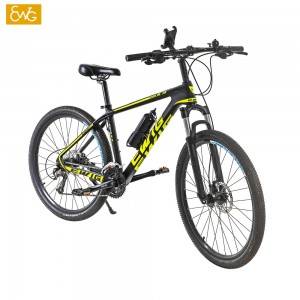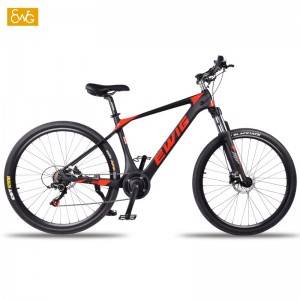When you return home from a tough old slog over the hills, often the last thing you want to do when you get in is clean your carbon mountain bike.However, without regular cleaning, the drivetrain will become mucky, parts can begin to corrode, and you're a lot more likely to find you're struggling with seized components, un-cooperative gears and squeaky brakes.Cleaning your bike properly takes minutes, but doing so regularly could save you the cost of a whole new groupset later down the line.
HOW TO CLEAN YOUR BIKE: STEP BY STEP GUID
1.Rinse the frame down
Start by giving the frame a basic wipe. Use a sponge and a bucket of water - don't be tempted to blast it with a pressure washer as this will force water into the bearings.
Spray the bike with a bike cleaning product, and leave it for a couple of minutes (see the back of the bottle for the optimum length of time). Then, with more clean water, use a soft bristled brush to give the bike a scrub.Don't ever be tempted to substitute the bike cleaning product and soft brush with washing up liquid and a kitchen sponge - this can result in a scratched or even colour faded frame.
Spray the bike with a bike cleaning product, and leave it for a couple of minutes (see the back of the bottle for the optimum length of time). Then, with more clean water, use a soft bristled brush to give the bike a scrub.Don't ever be tempted to substitute the bike cleaning product and soft brush with washing up liquid and a kitchen sponge - this can result in a scratched or even colour faded frame.
2. Clean and lubricate your chain
Your chain is your bike's most "at risk" lubricated part. Clean and lube it frequently to slow the rate of chain wear. To clean chains that don’t have too much built-up grime, simply use a rag and degreaser. For really dirty chains, you may want to use a chain-cleaning device, which is more thorough and a lot less messy. After the degreaser has dried, apply drops of lube slowly onto to the chain, getting some on each link. Let the lube dry, then wipe off any excess lubricant so it doesn’t attract more dirt. In general, lubricate your chain whenever it squeaks or appears "dry." Lubing after wet rides will help keep your chain from rusting. Take a copious amount of degreaser alongside some serious elbow grease to make your chain sparkling clean. A dedicated chain cleaner makes the job so much easier and less wasteful. Just pour the used degreaser into a bottle once you’ve cleaned the chain and the sediment should settle to the bottom. So long as you pour carefully - so as not to disturb the sediment - you should be able to reuse the degreaser next time you clean your bike.
3. Lubricate your brake and derailleur levers
Next, spray the derailleurs and chainset with a degreasing agent and give them a good (but gentle) scrub. It may be easier to take the chain off the chainring to do this.Check them frequently (especially in wet conditions) and relubricate occasionally so that they can effectively translate your commands to the component groups.
4.Use degreaser on the cassette
Spray more degreaser over the chain and cassette and give them a scrub. Using a gear brush really helps you to get into the cassette cogs.
5.Clean the rims and brake pads
Give the rims on your wheels a good wash and wipe, and (if you're using rim, not disc, brakes) wipe the pads to make sure there's no crud on there that could erode the braking surface.
Keeping your bike parts properly cleaned and lubricated is crucial for good performance. Lubrication protects moving parts from excessive wear caused by friction, prevents them from "freezing up," and helps keep rust and corrosion at bay.
Be careful, though. Over-lubricating can lead to poor performance and component damage (excess lubricant will attract dirt and other abrasive particles). As a general rule, excess lube should always be carefully wiped away before the bicycle is ridden.
Tip: When lubricating a number of parts at once, remember the order in which you apply the lubricants. Wiping off excess lube in the same order will give the lubricants time to soak in.
Most dirty bike components can be cleaned by wiping them carefully with a damp or dry rag. Other components require occasional brushing, scrubbing and relubrication.
Washing your bike with a high-pressure hose can cause damage to sensitive bearing systems throughout your bike. So, when washing with water, do so carefully.
learn more about Ewig products


Read more news
Post time: Dec-10-2021
